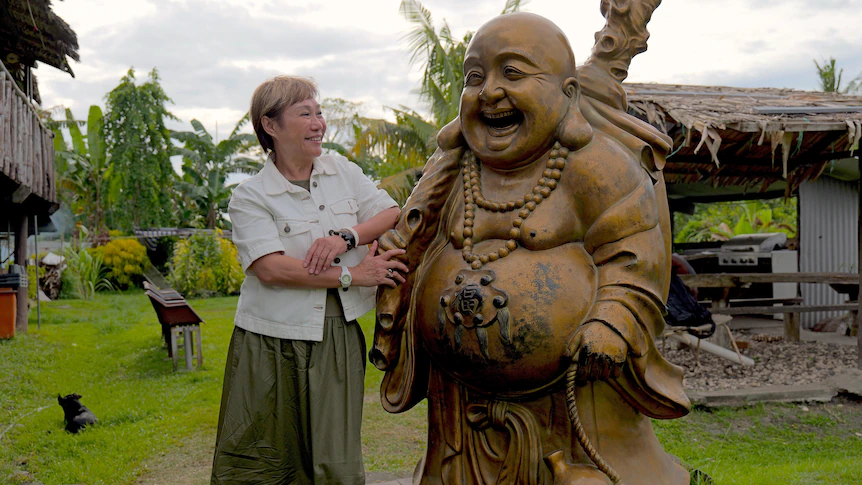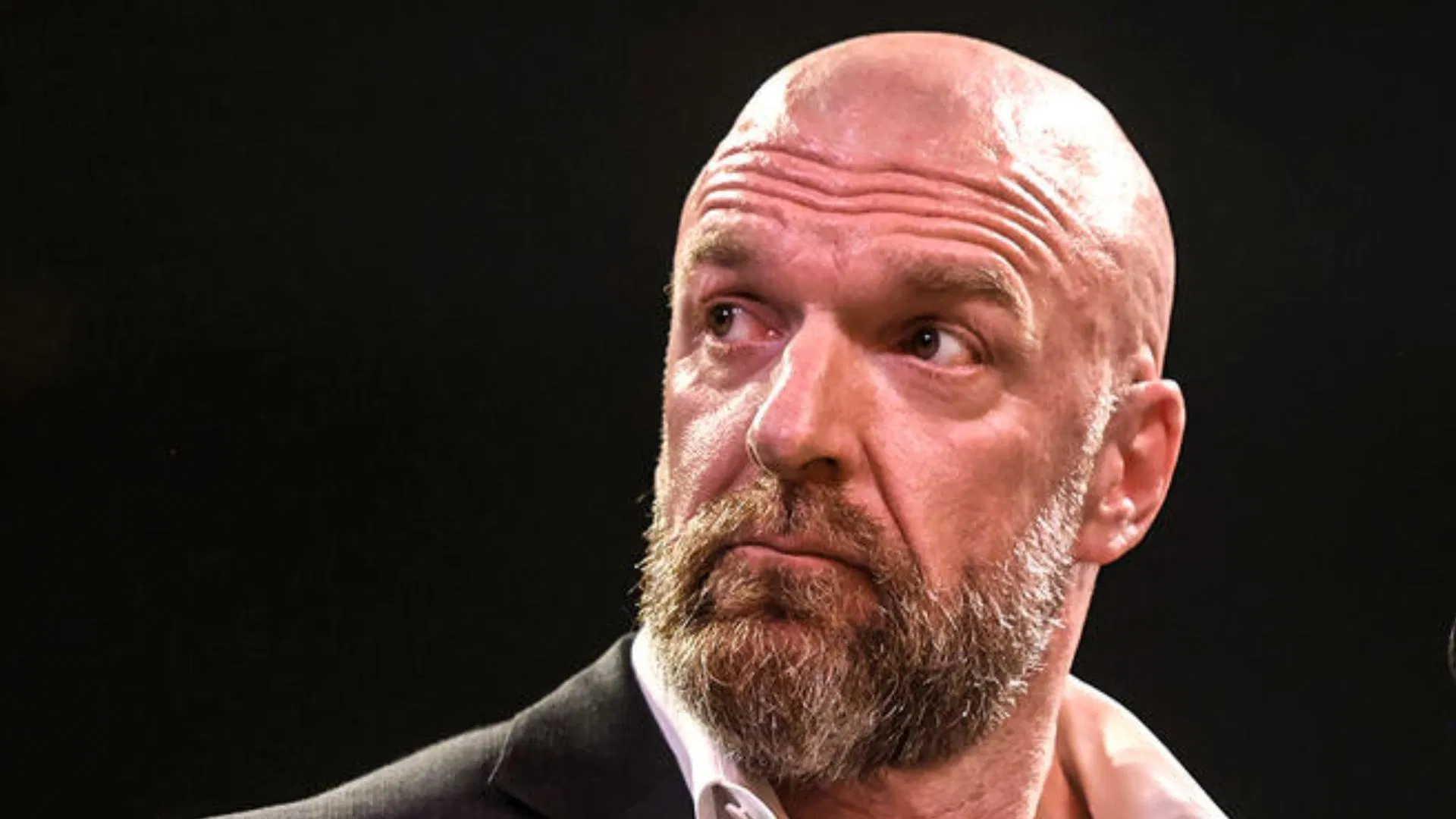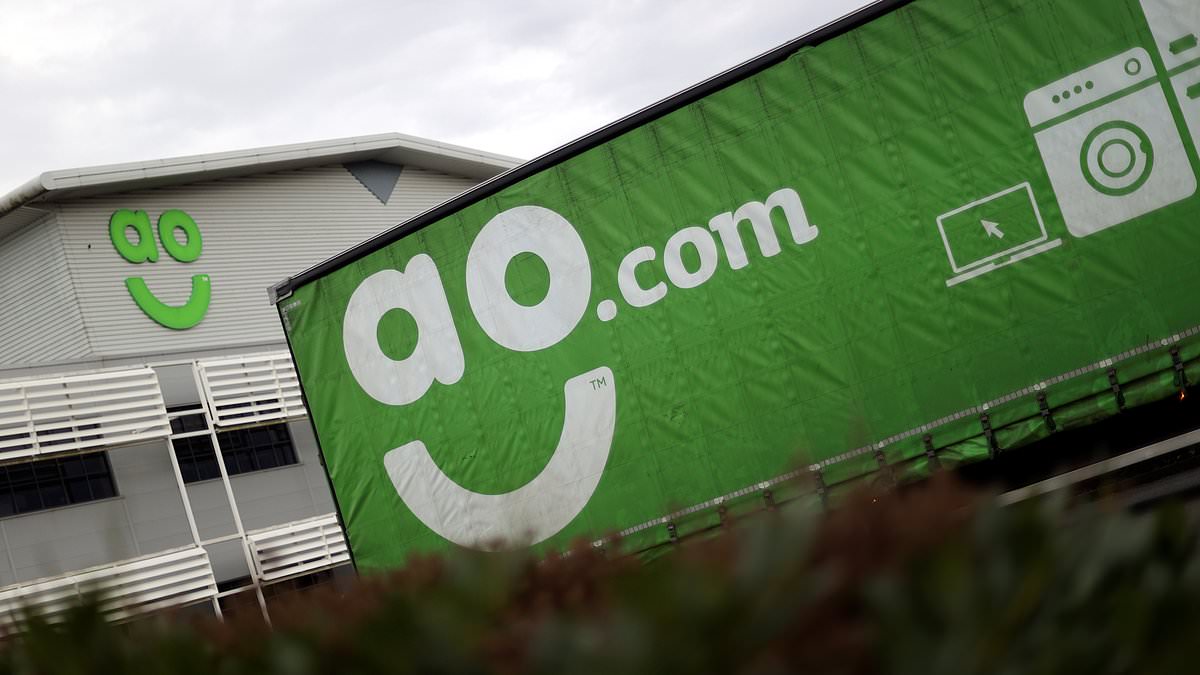By Sean Mantesso
Copyright abc

Golden, serene, and its belly polished smooth by tens of thousands of hands.
This Chinese-style statue — the Laughing Buddha — absorbed the touch of students before exams, brides before weddings, and ministers before late-night negotiations.
For more than 30 years, the Buddha stood guard at the entrance of Sea King, Solomon Islands’ most famous Chinese restaurant in Honiara.
It was never just a restaurant, but a theatre of Pacific life in an untold geopolitical play.
And for Stacey Wu, who arrived in the Solomon Islands from Taiwan as a teenager in 1981, Sea King was home.
China’s presence in the Pacific is often focused on geopolitical tension and rivalry. But Chinese people have lived in island communities for generations — these are their stories.
Stacey’s parents had established Sea King from the ground up in the late 1970s.
Her mother, after a failed timber investment, chose a restaurant because it was one of the few ventures open to foreigners.
“We started with six tables,” Stacey recalls.
“Eventually, we could seat 500.”
By the 1990s, Sea King had become the largest Chinese restaurant in the South Pacific.
Sea King soon became a landmark where islanders, politicians, and visitors gathered. Children played beneath banquet tables as dignitaries toasted above.
It hosted banquets for Taiwan’s presidents, Chen Shui-bian and Ma Ying-jeou, as well as for Australian prime ministers like Kevin Rudd.
Honiara’s middle class celebrated birthdays and weddings under its lanterns. Diplomats signed deals upstairs, while kids staged impromptu races in the hall below.
A fashion show in 1997 marked Hong Kong’s handover to China.
But the restaurant was never just about food and festivals. It was about belonging; a truth too often obscured by headlines.
Today, in Solomon Islands, the well-known folksong Walkabout Long Chinatown — the equivalent of Australia’s Waltzing Matilda — is remembered across Melanesia — a reminder that Chinese heritage is stitched into the very lyrics of island life.
It is just one example in the long history of Chinese influence on Pacific life.
In the mid-1800s, ships carried Chinese workers from Guangdong and Fujian to cut cane in Fiji, dig phosphate in Nauru, or haul timber in Samoa.
Many stayed — opening small shops, marrying locals, raising families with little more than language and grit.
By the mid-20th century, these Chinese families were no longer “foreigners”. Their next generations were Pacific locals: shop owners, teachers, or politicians.
Papua New Guinea’s independence hero, Julius Chan, was of Chinese descent.
In Kiribati, former president Anote Tong traced his roots to Chinese migrants who had settled in the Gilberts after World War II.
Evolving between two worlds
Honiara has never been a city at ease.
In the late 1990s and mid-2000s, riots swept through the city’s Chinatown.
Shops were burned. Families fled.
But Sea King was spared.
Stacey recalled that the police force protected the restaurant, while local leaders intervened and told the rioters to go elsewhere.
For Stacey, her family’s place in Solomon society went beyond ethnicity.
Her father and brother, both Taiwanese police officers, had once trained Pacific forces.
Taiwan’s influence was visible — in classrooms, police ranks, even in Sea King’s banquet halls.
That was, until 2019, when the Solomon Islands severed ties with Taipei and switched recognition to Beijing under its One-China policy.
It was part of a larger story: in the past two decades, nine Pacific nations that once recognised Taipei have crossed the diplomatic line to China.
That moment raised a deeper question for Stacey: “Who am I to others?”
For her, the answer lies closer to home than to geopolitics.
“Here in the Solomons, I am an Islander,” she said.
Still, the air shifted. Taipei’s scholarships and training programs gave way to Beijing’s concrete and steel.
For Stacey — who spent her life hosting presidents in a hall built by her mother’s hands — the pivot marked a turning point, for her family and for Chinese-Pacific communities more broadly.
The new shopfront
Walk through major Pacific cities — Honiara, Suva, Port Moresby — the story feels different today.
The Chinese-speaking communities that once centred on Cantonese families and Taiwanese Mandarin speakers now include a growing wave from mainland China.
More than 90 per cent of grocery shops are now owned by people of Chinese heritage in Honiara.
Their shops are easy to spot.
Owners perch high on stools at the counter, watching over the floor.
Local staff move briskly in the aisles.
Until a minimum wage was introduced in 2019, many earned barely enough to get by.
For business owners like Jenny, the reasons for coming are plain.
“My cousin was already here,” Jenny said with a shrug. “She said business is good here.”
Most hail from Guangdong or Fujian, Southern Chinese regions where there is a long tradition of people going overseas.
A familiar phrase travels with them: chī kǔ — “to eat bitterness”. Endure hardship. Work long hours. Don’t complain.
In Honiara, Chen Aiqing embodies that ethic. She runs her shop from dawn until midnight and brought her older sister and nephew from China to help.
Older families like Stacey’s learned island languages and rhythms, sending children to the same schools and joining local ceremonies.
Many newer arrivals stay focused on commerce, transforming their towns through capital rather than culture or politics.
The difference is historical.
Post-war migrants did not expect to return to a poor, closed China. They built permanent lives.
Today’s migrants come from a dramatically transformed Chinese economy, measuring success in profit and options, often with one eye on remittances and the other on the next opportunity.
It can feel like two Chinese communities standing side by side: one woven into island society, another one counting margins.
A universal tension
Across the Pacific, leaders are voicing the same distinction.
In Fiji, Prime Minister Sitiveni Rabuka put it plainly to the ABC: “Those who came early have contributed a lot to Fiji, and they are still contributing.”
“We have had many prominent Fijians of Chinese descent.”
Of newcomers, he is firm: those arriving must meet immigration rules and prove they are “genuine investors monitored by the Ministry of Commerce and Trade”.
In Lautoka, Fiji’s second-largest city, Kenneth Low embodies the older arc.
A third-generation Chinese Fijian, grandson of early migrants in 1908, he trained as an architect and left his mark on the capital — most recognisably Suvavou House in Suva.
By the early 2000s, Kenneth’s influence reached beyond architecture.
He became vice president of the Fijian Senate, one of the highest political roles held by a Chinese-Fijian.
“There’s a big division between the older Chinese and new Chinese,” Kenneth said.
“If people coming here integrate into the culture, they can live very happily in Fiji.
“I believe our government will definitely not welcome anybody who is likely to destroy the Pacific way of life,” he said, worrying the Pacific could be caught in the cross-currents of powerful nations.
Kenneth’s life has been no stranger to unrest.
Born in mainland China during WWII, his family resisted the Japanese invasion but fled as the Communists came to power.
Their journey ended in Fiji, where Kenneth grew up far from his ancestral roots.
It was in his 60s when he returned to his mother’s hometown. But the village had vanished — replaced by towers and highways.
The trip was disorienting: Chinese by blood, Fijian by belonging. Lacking Mandarin, he could barely speak with relatives.
“They were always speaking in Mandarin and I could not understand,” he recalled.
“They had to get one of the kids who was learning English at school to come and be the translator.”
Just as he became a politician, Fiji’s politics became volatile.
In 2006, Commodore Frank Bainimarama’s military coup swept the government aside.
Kenneth had to flee again to Sydney, as many of his colleagues went to jail, marking the beginning of an 18-year exile.
Now in his 80s, back in Fiji since 2024, Kenneth chairs the Lautoka Chinese School — founded with help from his grandfather, and where his father was once a teacher.
For almost 80 years, the Lautoka Chinese school has been at the heart of the Chinese community in western Fiji.
Initially, it brought together families who fled the Japanese invasion of China during World War II, and later those escaping the Chinese communist regime.
Despite Fiji’s independence, military coups, and the passage of time, it continues to serve the community today.
Across the Pacific, such schools — established in the early 1900s — anchor communities in language and memory.
As Honiara principal David Quan puts it, they remind children “who they are and where their families came from.”
The reminders can be painful. In Solomon Islands, Chinatown — and the school within it — has burned more than once.
In Fiji, coups have tested loyalties, even restricting school names from carrying ethnic labels.
Each upheaval forced families to decide, again and again, whether to stay, rebuild, or move on — to Australia, New Zealand, or Canada — in search of survival.
China’s new chapter
Tonga is also home to a large Chinese community, and like in Solomon Islands, they dominate the retail sector.
Today, the number of Tongans with Chinese ethnicity is estimated to be about three to four per cent of the country’s population.
In the capital city of Nuku’alofa, China’s presence is hard to ignore.
“Chinese people doing business here also really want to operate lawfully and in compliance,” Qian Chen, an importer and retailer, said.
“More and more Chinese businesses are very formal now, running strictly according to Tongan law. I think that benefits Tonga’s development.”
Back in Honiara, the skyline also tells the same story.
A paved road financed by China’s state-backed loans; a national stadium gifted for the Pacific Games; and a new hospital stamped by Chinese contractors.
Stacey welcomes infrastructure that helps her country, wherever it comes from — an attitude shared by many Solomon Islanders who told the ABC that they need clinics, roads and jobs as tangible gains.
However, her parents are gone. Sea King is closed.
She has leased the old hall to World Vision, hoping the space will keep serving the city differently.
Dozens of kilometres away, Chinese miners are digging gold at the country’s massive Gold Ridge mine.
The mine was revived in 2019 after a $US825 million ($1.26 billion) deal involving one of China’s largest state-owned companies.
The company behind Gold Ridge mine has also shown interest in building a port near Honiara’s airport — on the same coastal strip where Stacey’s family lives.
Closer to home, developers have also come knocking. Malaysians bought the land to her left, and Chinese investors claimed the land to her right.
Both want her property. She has refused.
If the golden Buddha is memory made visible, the gold mine is the unphotogenic work that keeps a new era moving.
The Chinese presence in the Pacific is old.
What’s new is its scale and speed.
Chinese-Pacific islanders stand in the middle, a foot in each current, certain that both can be true.
Writing and Digital Production: Bang XiaoReporting: Bang Xiao, Chrisnrita Aumanu-Leong and Marian KupuPhotography: Bang Xiao, Nick Sas and Willard WestGraphics and Videography: Jarrod Fankhauser and Sean Mantenso



